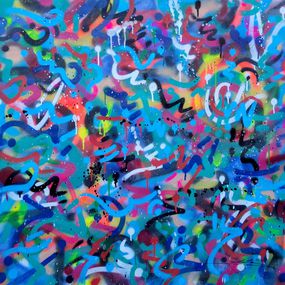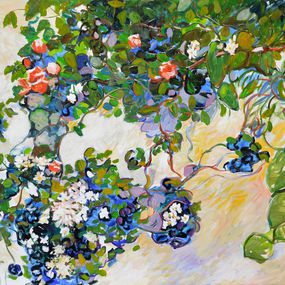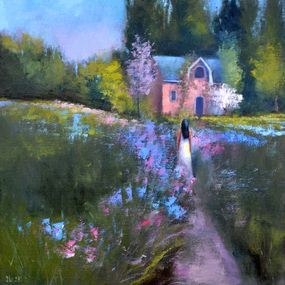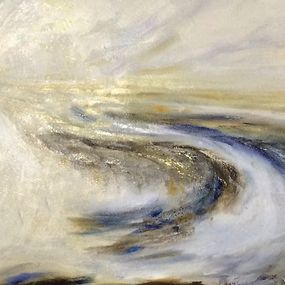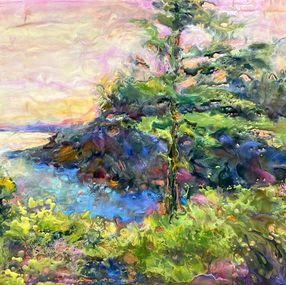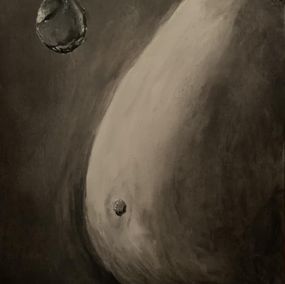
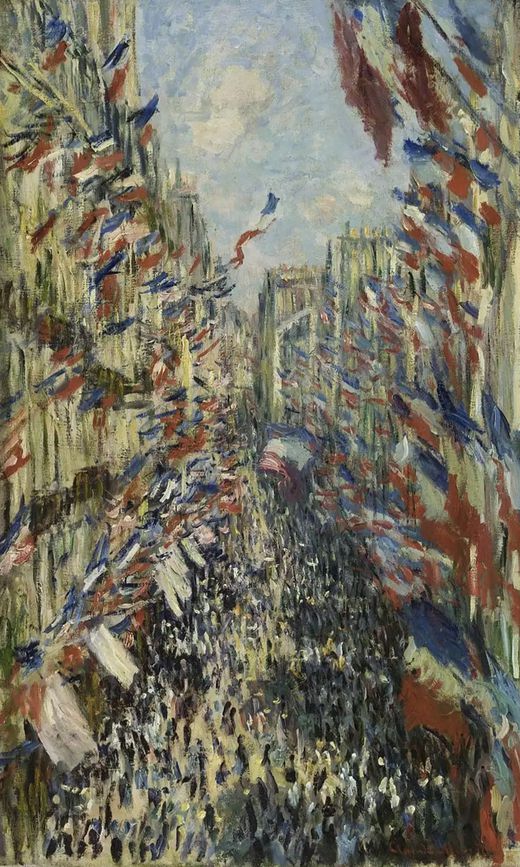
I perhaps owe having become a painter to flowers.
Biography
The painter Claude Monet, called the hunter of light, was one of the most influential painters in the history of art. He reshuffled the cards and created new rules for painting. During his lifetime, however, his works were considered unfinished. They didn't meet the criteria of the time and Monet was viewed as an outsider. Yet it was him who took painting out of the studio and introduced painting according to nature: he heralded a new era.
This undisputed master of impressionism was born in 1840 in Paris, but he grew up in Le Havre. An unruly child, he often produced caricatures. When he was 18 years old, he met Eugène Boudin, who took him under his wing and encouraged him to explore other subjects. Monet began painting landscapes bathed in light.
He met his wife Camille in 1866 and she became his muse, together with their son Jean (born in 1888). Very soon, Monet became perfectly aware of his love of nature, which featured in the background of his portraits.
Rejected by the Paris Salon, Monet organised gallery exhibitions with other Impressionists. The Monet family then moved to Saint-Michel, where Monet met the painter Renoir; together they painted at the resort “La Grenouillère". Monet became interested in water and its reflections.
In 1870, Monet escaped war-torn France and sought refuge in England. He met the art dealer Durand-Ruel in London. The meeting was life-changing: Durand-Ruel played a significant role in the painter's success. Monet's depictions of London covered in mist are incredibly poetic and herald the painter's already established style.
Upon his return to France, Monet moved to Argenteuil. Outdoor painting inspired him and made him extremely productive. He set up his studio on a boat so that he could explore various perspectives. He often went to the train station to paint trains, which at the time were still very uncommon and marked the beginning of the industrial age. Monet's series of paintings of the Saint-Lazare train station (1877) was a huge success.
Nevertheless, sales of his paintings were not enough for him to live comfortably. All three of them therefore moved in with the couple Ernest and Alice Hoschedé and their children, who were collectors of Monet's works. Claude Monet fell in love with Alice and lost his wife Camille, who died of cancer. Monet painted her lifeless body.
Monet developed his painting techniques and his still life paintings began to sell very well. He painted snow and its colourful reflections, and figures dominated by vast landscapes. The texture of his paintings became richer. Monet chose his subjects and depicted them several times, bestowing on them the variations caused by light and the seasons. For instance, after moving to Normandy with Alice Hoschedé, he depicted the cliffs at Etretat in different weather conditions and in various lighting. Landscapes touched him deeply.
He ultimately settled in Giverny in 1883 and felt perfectly at ease there. He painted his stepdaughters, water, his garden, haystacks… Always the same subjects, but never the same light! His works are truly reflective of the indivisibility of the subject and the light. They are both ephemeral because light gives subjects a particular appearance for only an instant.
Monet returned to London and depicted the city from an almost surrealist angle: the bridges and the parliament building enveloped in pink fog. He also travelled to Norway as well as Bordighera in Italy, and returned to Normandy. Despite his enchantment with these places, he finally settled in his house in Giverny. Inspired by Japanese prints, he created a magnificent garden that offered him countless possibilities.
Urged by Durand-Ruel, Monet painted “Water Lilies" (“Les Nymphéas"), his masterpiece! Unfortunately, he finished his life alone in his large house in Giverny suffering from a cataract – a cruel fate for someone who so loved contemplation…






